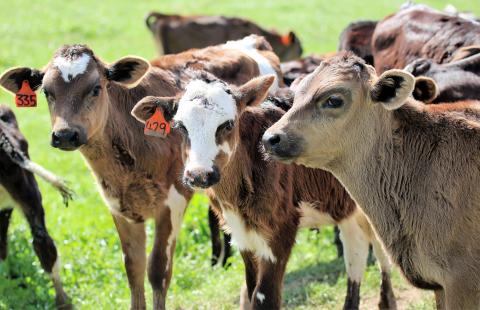-
Spill entitlement
Declaring a ‘spill’ means the water ordered and used from the start of the season through to the 15th December is considered over and above the customers 100% allocation.
-
Allocation method
Seasonal allocations in the Macalister Irrigation Area (MID, Thomson, Macalister River & Rainbow Creek diverters)
A seasonal allocation tells irrigators what percentage of their high and low reliability water shares they can use for the season. It reflects how much water is actually available in storage.
As a general rule, the Macalister Irrigation District (MID) irrigation season begins on 15 August and ends on 15 May. The irrigation season for river diverters begins on 1 July and finishes on 30 June.
Southern Rural Water (SRW) determines the allocation in the Macalister Irrigation Area based on available water.
We announce the starting allocation on 1 July each year, and review it each fortnight during the season.
To receive allocation updates by SMS, email or fax, please contact us.
-
How we work out the allocations
We divide the irrigation year into three phases:
- filling
- spilling
- emptying
This approach recognises Lake Glenmaggie as an annual storage, and makes all water available for use during the year. The reservoir will generally increase in volume in winter and spring (filling most years) then spill during springtime and gradually empty during late spring, summer and autumn. Because winter and spring inflows are generally enough to fill Lake Glenmaggie, we don’t need to carry over water from one irrigation season to the next.
The filling phase
The filling phase starts at the beginning of the irrigation season.
The spilling phase
The spilling phase begins once Lake Glenmaggie has filled (usually between September and October). The spilling phase ends on 15 December each season. During this time, Southern Rural Water may allocate up to 100% high reliability water shares with the utilisation of the Thomson Drought Reserve. No low reliability water shares (Sales) are available during this period.
The emptying phase
This phase will start when we begin to draw down on the water held in Lake Glenmaggie. Depending on inflows into Lake Glenmaggie during the emptying phase, Southern Rural Water may announce allocation against low reliability water shares.
Maximum efficiency rule
In very dry seasons, the Maximum Efficiency Rule is applied to help secure water supplies by keeping losses to a minimum during the filling and emptying periods. Our planners will schedule water deliveries to maximise efficiency and to conserve the volume of water in storage. This may mean a small change to your requested water order day or time of delivery.
In seasons of low allocation, irrigation rosters may also be introduced to maximise efficiency, so that channel operating losses are reduced. As an example, a channel system may operate for a week and be closed for a week. Customers will be notified well in advance if channel rosters are going to be introduced.
Spill entitlement
Once Lake Glenmaggie spills, all water used from the start of the season is called spill entitlement. As a result, all water that has already been used when spill entitlement is announced will be credited back as “usable allocation”, leaving you with your full seasonal allocation to use.
The process of crediting your usage during the spill period will continue until the maximum communal volume of 62,000 megalitres is reached.
To receive spill entitlement, all water orders must have been both placed and delivery completed, before the spill finishes.
If Lake Glenmaggie doesn’t spill, there will be no spill entitlement and any water used will continue to be deducted from your seasonal allocation.
-
Thomson Reservoir Drought Reserve
The Thomson Drought Reserve is only used when the allocation is below 100%.
The drought reserve will be used to maximise allocations early in the season, and to provide additional allocation for dry years. The drought reserve or a proportion of it will remain in the allocation model until 100% is reached using inflows to Lake Glenmaggie and Harvest Rights only. From this point, any allocation of low-reliability water will come from further inflows into Lake Glenmaggie.
In practice this means that the entire entitlement shall be applied to the allocation model:
- at the beginning of the season (1 July);
- at the end of Lake Glenmaggie actually spilling; and
- at the end of potential spilling period (15 December).
This is likely to mean that water releases shall be managed to ensure the maximum volume of water is maintained in the entitlement – i.e. river harvest rights and releases from Lake Glenmaggie will be the first sources used to meet demand.


